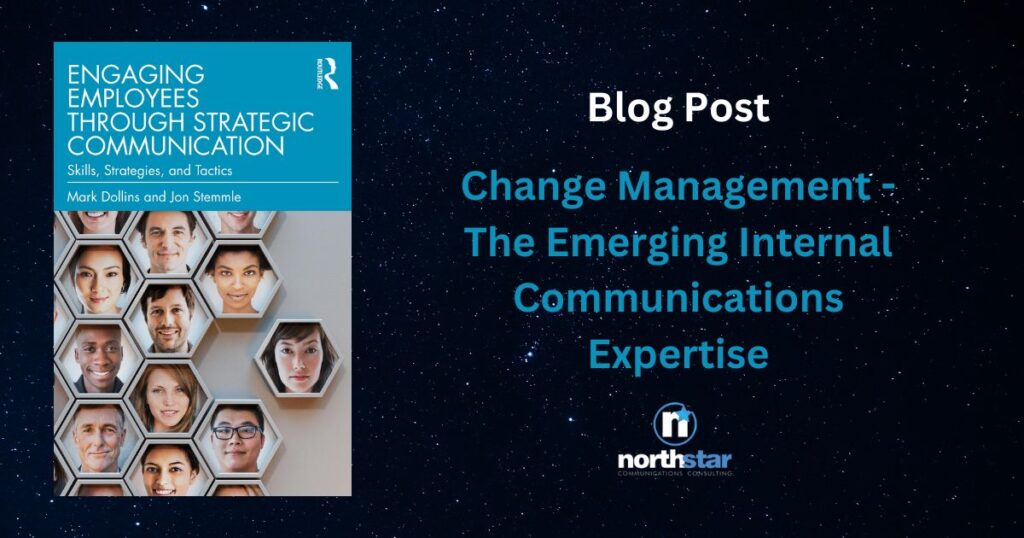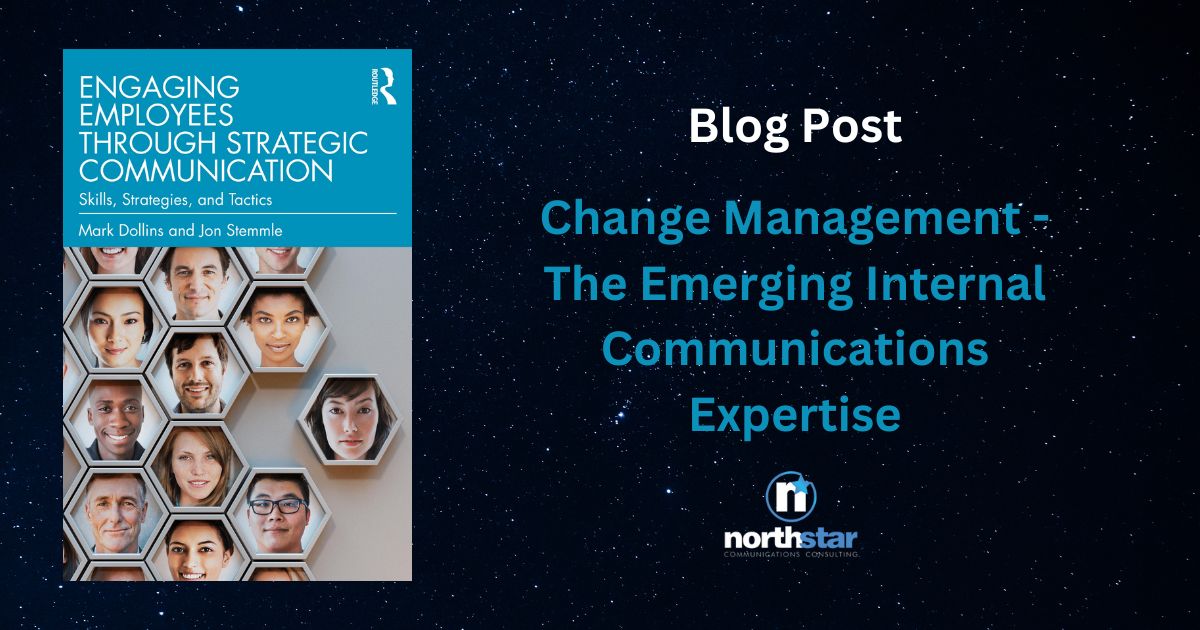
This blog post briefly summarizes Chapter 10 of the book Engaging Employees Through Strategic Communication by Mark Dollins and Jon Stemmle. Visit engage-employees.com to grab your copy today.
To understand where, arguably, the most visible opportunities are for employee communicators to make an impact with business, look no further than 500 BCE. That’s when Greek philosopher Heraclitus summed up what was, is, and will likely always be the constant denominator for where communications within organizations can make its biggest mark: change.
“Change is the only constant in life,” Heraclitus wrote. And when we apply that to the business world today, it’s a universal reality. If you find an enterprise that isn’t going through change, it probably won’t be around for long. It’s the nature of the beast; in order for businesses to thrive, they must adapt to constant changes in, and around, them. Whether it’s customer preferences, new competitors, disruptive technology forces or a host of other catalysts, the reality for employee communications professionals is that there is an endless supply of change influences that demand their engagement.
This is where change communications comes into play.
Here’s both the problem and the opportunity: most employee communicators aren’t educated or trained in the discipline of change communications. They’re often given a single change or a series of independent changes to communicate. These more tactical executions of change communications may be effective in explaining what’s changing, but — over time — they miss a much bigger opportunity to engage employees in longer-term or more substantive, complex change. And increasingly, that’s what organizations find themselves having to address.
In recent years, it has been the understanding of how to manage larger-scale and more complex change — and the corresponding demands it places on communications — that has created the biggest new opportunities for employee communicators. The scale and timing of change certainly can be different for every organization, but the ability to manage change successfully has a real and tangible impact on organizational performance. Communication is central to every effective change management.
Fundamentally, change for organizations is being driven from every direction. Stakeholder expectations are rising: customers want innovative, integrated solutions faster; employees want growth, meaningful work and a sense of belonging; and shareholders want faster growth and greater financial performance in responsible ways. In the midst of the ongoing trends and changes, organizations find themselves having to continuously adapt and evolve in order to position themselves more competitively.
Think about two organizations merging into one. Or two organizations merging into one, then breaking up into three companies. Or it could be companies implementing new technologies to put them on common platforms or to engage customers online — in ever-improving ways. Human beings have no shortage of ideas leading to change, but implementing change to support those ideas inevitably will create a working environment of both optimism and fear. Well-managed change tips the scale more towards optimism.
The positives associated with change can often get lost in employees’ speculation about what’s causing the change. It may be concern about impact on their jobs — whether those jobs will change or possibly be eliminated. Or it could be fear over how the organization will implement its changes; is the change fairly distributed, and is the time frame reasonable, or too aggressive?
Well-run change management ensures the “people side of change” is considered each step along the way in the change process—from planning to implementing to reinforcing change. Essential to the change effort is a communications plan that reaches the hearts and minds of those affected by the change, and helps get their buy-in.
The bottom line: change managed poorly costs
Research from McKinsey & Company reported in 2015 that 70 percent of change programs fail to achieve their goals, largely due to employee resistance and lack of management support. The firm also went on to say that when people are truly invested in change, it is 30 percent more likely to stick.
Poorly managed change can lead to millions of dollars in lost productivity, wasted resources, increased costs and rework. Additionally, it can impact employee morale and engagement. And even when some type of change management process is used, it is often implemented too late to be measurably effective.
The impact of change-related stress on performance is, however, measurable. Gartner reported in 2019 that 79% of employees have experienced significant organizational change in the previous two years, such as mergers and acquisitions, a new company strategy or executive leadership turnover. Seventy-three percent of change-affected employees report moderate to high stress levels. That’s important to understand because stressed employees impact business outcomes: change-stressed employees perform 5% worse than those who are not stressed. For the average company, this performance decline translates to a $32.5 million hit to the bottom line per $1 billion in revenue (see Figure 1).
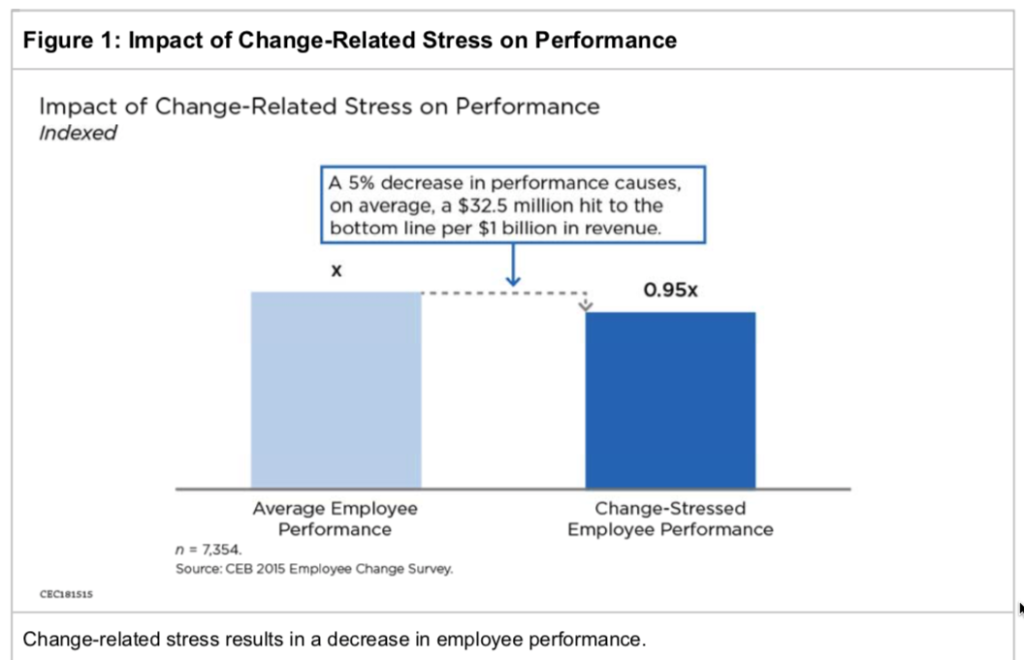
The connection here for employee communicators is that change costs money, but change managed well generates significant positive returns on investment (ROI). Rather than being viewed as a cost center in financial terms, communications that support change can, and is, viewed as a central enabler of ROI for change efforts, and that almost always means a lot of money.
Clearly, managing the “human side of change” is important, and doing it well means understanding exactly how humans respond to change. While humans experience the stages in different ways and to different degrees, the idea of identifying common stages gives change management, and change management communications professionals, specific insights to incorporate into their strategies for managing and communicating change.
The easier it is for the employees to adapt to change, the faster and less painless it is for any organization to move through the change curve.
Are you curious about the various popular change management models? Pick up a copy of Engaging Employees Through Strategic Communication to read the full chapter.
Get Your Copy Of The Engaging Employees Through Strategic Communication Book Or Contact North Star Communications Today
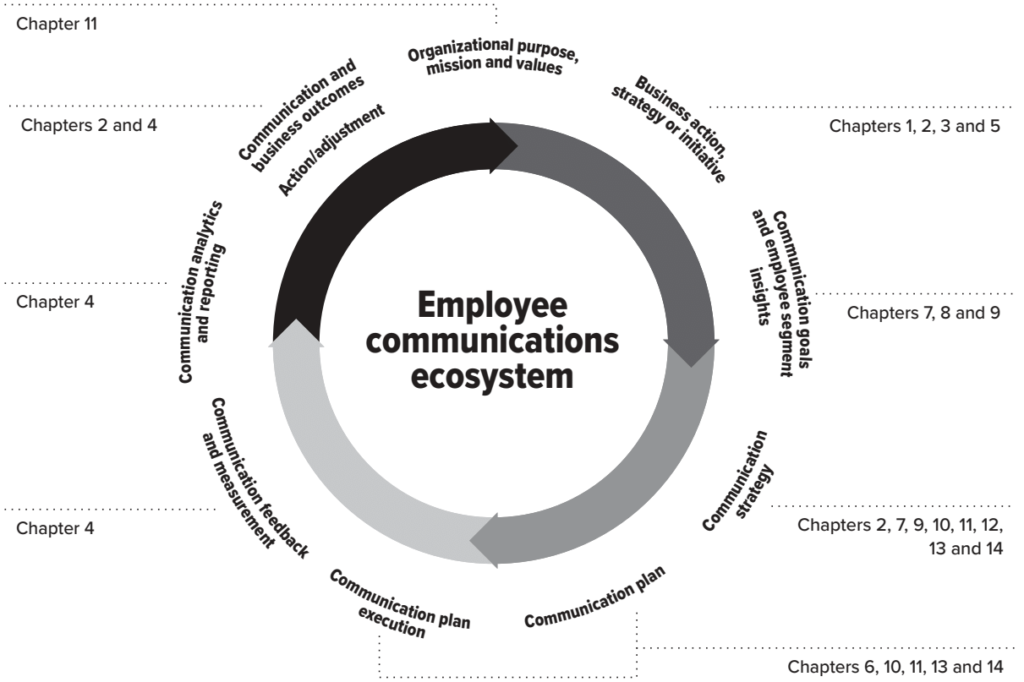
The diagram above shows the different topics covered in the book. Take advantage of the opportunity to enhance your organizational communication strategy and engage your employees effectively by getting your hands on the highly recommended book, Engaging Employees Through Strategic Communication by Mark Dollins and Jon Stemmle. Piqued your curiosity? Want to know why change communications, Block Chain, Artificial Intelligence and employee activism will shape our near-term future? Visit engage-employees.com to grab your copy today.
If you’re looking for expert guidance in implementing change communications, talent development, and coaching in your organization, look no further than North Star Communications Consulting. Contact us today to schedule a free consultation and take the first step toward transforming your organizational communication approach.

